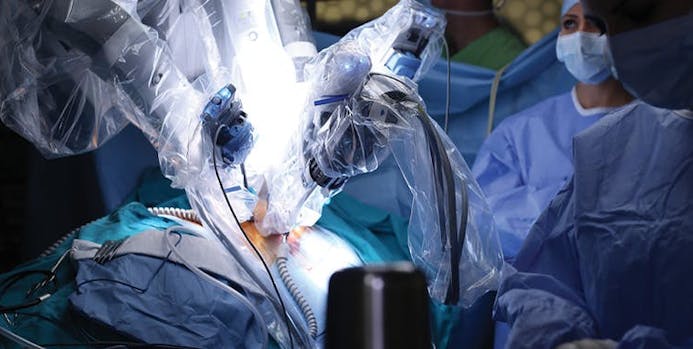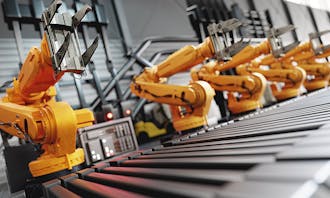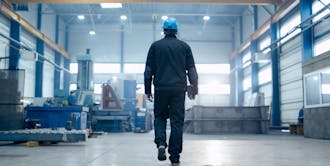Top three trends in medical device manufacturing
2021-04-12
3 min read
It’s been 20 years since the da Vinci robotic surgical system was released, introducing robotics and automation into medical manufacturing. Since then, Industry 4.0 technologies have revolutionised automation capabilities, which are vastly used in the production of medical devices.
For manufacturers of medical devices, the main goal is minimising production costs while improving patients’ experience. The most recent advances in automation could help manufacturers achieve their goals and acquire other benefits on top.
Cloud-based solutions
At the moment, cloud computing makes up only 12 per cent of the global healthcare supply chain market, but investment in this area is predicted to grow from USD 28.1 billion in 2020 to USD 64.7 billion by 2025, according to a report by Markets&Markets.
Cloud-based solutions are the future of manufacturing medical equipment, ticking all the boxes on a manufacturer’s list. They are cheaper than on-premises solutions, which require purchasing software licenses per the number of users and planning for additional costs for user’s support. Cloud solutions provide all of the functionality of an on-premises system, but at a lower cost because they eliminate the need to maintain and periodically update expensive hardware.
While they are significantly cheaper, cloud solutions do not compromise on quality, but provide enhanced security, greater scalability and higher performance. They are also more mobile-friendly and provide universal access so that anyone in the company can access the data securely, wherever they are.
The volume of global healthcare data is expected to grow exponentially in the next few years, and medical device manufacturers should have systems in place to store and process it efficiently. Cloud-based solutions are a trend that should not be missed by manufacturers in the upcoming years if they want to stay competitive in the market.

Artificial intelligence
Artificial intelligence (AI) is being increasingly used in manufacturing facilities to improve accuracy and efficiency. For example, machine learning allows a robot to understand, process and take steps in real time to perform a task efficiently and productively. Now, the challenge for manufacturers is to use machine learning technology to respond to the growing need for mass customisation.
In medical device manufacturing, this is a particularly pressing issue, since many products are intended to be used by only one patient and need to be customised to meet that person’s requirements and characteristics. This is the case, for example, with implantable medical devices such as hearing aid inserts, prosthetics and dental appliances.
The advancement of modular robots is one potential solution for overcoming this issue and opening the door to mixed manufacturing. A modular approach allows multiple tasks to be performed by a single robot, which can be reconfigured by simply swapping parts such as arms and sensors.
AI has the potential not only to advance new types of robots, but to also enhance dexterity and productivity in automation equipment — both of which are crucial for manufacturing medical devices.
VR and AR
Virtual reality (VR) and augmented reality (AR) provide endless opportunities for manufacturers broadly and particularly for the medical devices field. AR enables companies to provide real-time support to their manufacturing facilities, regardless of location, and to implement predictive maintenance. It has the potential to reduce human error, minimise execution time and increase productivity and profit. A case study produced by GE Healthcare demonstrated that its warehouse workers had a 46 per cent increase in productivity using AR, leading to a significant reduction in downtime.
AR is also beneficial for increasing collaboration between workers and sharing expert knowledge for achieving the best results. Recent studies suggest that team effectiveness in the healthcare sector needs to be improved and that lack of collaboration affect negatively both patients and providers. In medical device manufacturing, VR and AR solutions can yield significant progress and overcome some of the challenges faced on the floor level. AR is here to stay and its development in the coming years will be one of the most interesting trends to watch.
While cutting-edge technology is revolutionising the healthcare sector, older tools and system are often still in use and working efficiently. At EU Automation, we can help you find new, reconditioned or obsolete parts for medical device manufacturing, regardless of whether it’s a 20-year old system or the latest automation technology.



